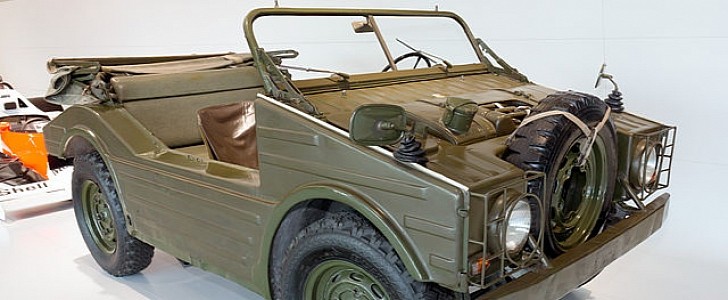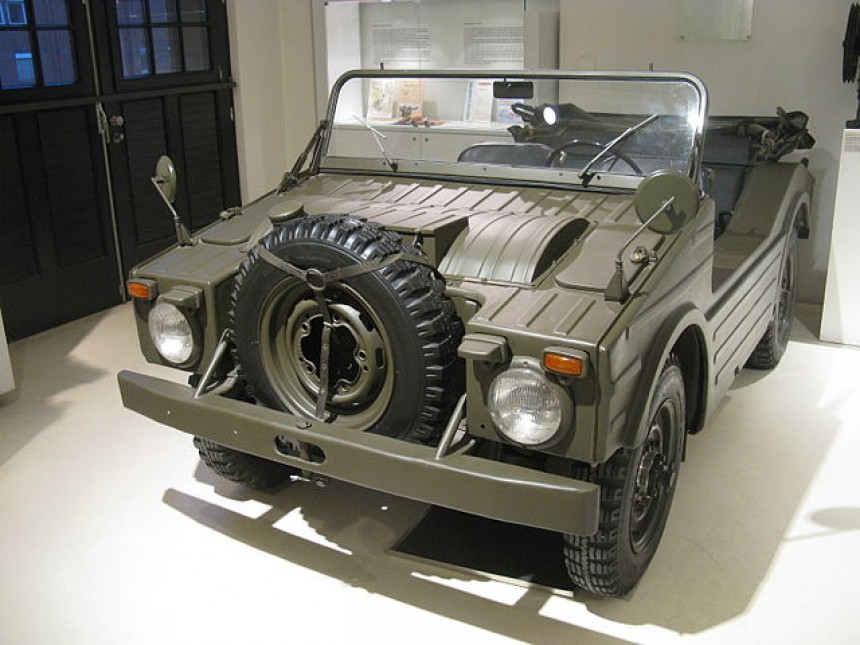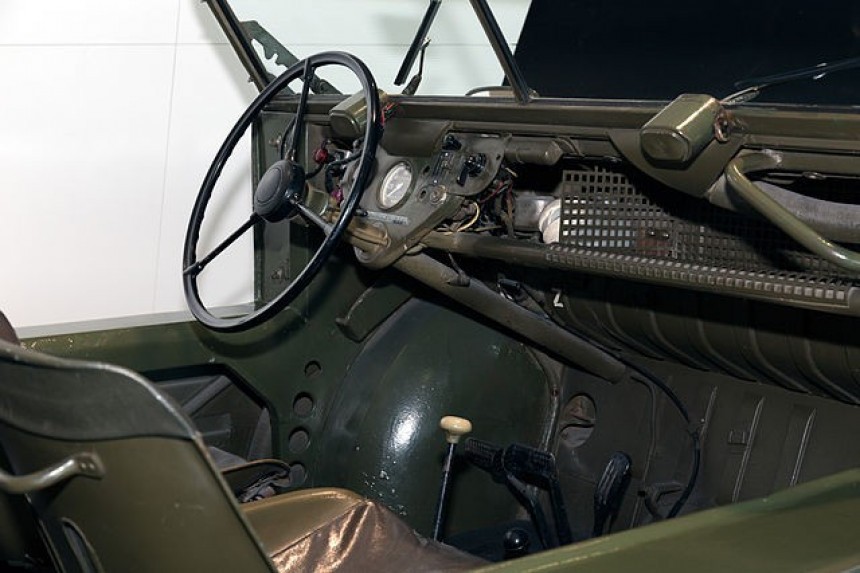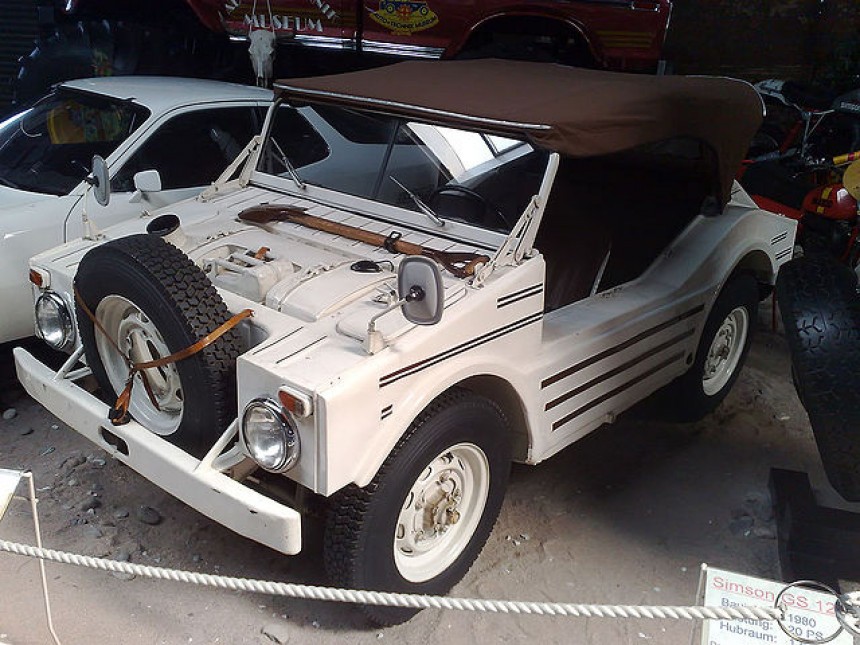Porsche may not like to talk about its founder's time as a military contractor for the German armed forces of World War II. Most reasonable people would be understanding and be empathetic as to why.
But since we're wrapping up Porsche Month here at autoevolution, we thought it would be a wonderful learning experience to try and separate these machines from the monstrous regime that spawned them. Because all machines have human creators, and Ferdinand Porsche was no ordinary man.
So far, we've shown you Old Man Porsche's contributions to the aviation industry in the form of the V-1 Flying Bomb and on the ground with the Tiger tank concept and the Elefant heavy tank destroyer. But there's one thing every good Army needs even today, a halfway decent utility truck.
For the Americans in the Second World War and Korea, this vehicle was the Jeep. A light off-roader built by a plethora of different companies, including Ford and Willys-Overland, to name a few. With countless others building Jeep-like vehicles under license. The British, on the other hand, had the Land Rover. Who still builds custom kitted 4x4s for the Royal Armed Services today. Both off-roaders also saw action in wars fought by both the U.S and the U.K. immediately following the end of World War II.
When it came to post-war West Germany, all they had was the lowly Kübelwagen. A Porsche-designed, Beetle-derived contraption, no doubt. But a capable off-roader in its own right. Still, the added weight from the Kubelwagen's heavy steel frame coupled with a lock of four-wheel-drive kept it from being quite as nimble as American Jeeps or British Land Rovers.
Unlike the Kübelwagen, the Porsche 597 Jagdwagen, or "hunting car," in German, had a basis, not in the Beetle, but the Porsche 356 sports car. A limited pre-production run of a few hundred units rolled out starting in 1955 to fill the role of the Kübelwagen in the new West German Army, the Bundeswehr.
At the rear of the vehicle sat the 1.6-liter boxer engine so famously found in the 356. The engine was fed through a five-speed manual gearbox with an on-the-fly two/four-wheel drive shifter mechanism, much like an American Jeep of the same period. Its short wheelbase and four-wheel traction made for a package West German Army Officers claimed to enjoy when it was tested in field-like conditions.
Being buoyant and theoretically capable of amphibious travel would have also come in handy for the emerging Bundeswehr. Fitting a propeller and rudder to the vehicle's rear was not out of the question in the early days of the 597's development. The Monocoque shell of the Porsche 597 was also highly advanced for the period.
Unlike subsequent models, the single prototype Porsche Jagdwagen came with a slightly smaller 1.5-liter boxer engine and no doors. It also had body panels built by Porsche's own Stuttgart-based design team. Subsequent editions had bodies manufactured by Karmann Works. Even so, it's claimed the prototype could still achieve a top speed of 100 kph (60 mph) on the tarmac. Not bad for a 50-ish horsepower military 4x4.
There was a lot to like with Ferdinand Porsche's design. It offered all the rugged ability of a Jeep or Kübelwagen of year's past with an added layer of refinement Porche hoped would make his Jagdwagen stand out from a crowd of very capable military 4x4s from Germany and the rest of NATO.
The torsion bar suspension seen underneath the vehicle at all four corners would certainly be a good way of achieving that. The first torsion bar setup ever originated on Porsche's Beetle, after all. It would have been put to great use had the 592 been successful.
At least on paper, it appeared that Porsche was in a good position to take home the contract for the Kübelwagen's replacement. It would have been a very lucrative and publicity-enhancing deal for the company. One that could have drastically altered the course of Porsche's history.
But there was one catastrophically huge problem will the discussed proceedings. Porsche didn't have a clue how they were going to meet the Army's production requirements. With the Second World War over and Porsche's main focus firmly on the luxury sports car market, there may not have been enough manufacturing space in all of Stuttgart to fill the NATO-backed Bundeswehr's requests. Only a handful of 957s were ever produced, funnily enough, mostly for the civilian market.
Even so, Porsche planned an ever-larger version capable of adaptability to a number of different roles in the late 1950s. Mostly as a last-ditch maneuver to recoup some of the losses from not being capable of fulfilling the needs of the Army. This concept never got off the drawing board. In the end, the contract for the Bundeswehr's Jeep went to the DKW Munga from a little German company called Auto-Union.
So far, we've shown you Old Man Porsche's contributions to the aviation industry in the form of the V-1 Flying Bomb and on the ground with the Tiger tank concept and the Elefant heavy tank destroyer. But there's one thing every good Army needs even today, a halfway decent utility truck.
For the Americans in the Second World War and Korea, this vehicle was the Jeep. A light off-roader built by a plethora of different companies, including Ford and Willys-Overland, to name a few. With countless others building Jeep-like vehicles under license. The British, on the other hand, had the Land Rover. Who still builds custom kitted 4x4s for the Royal Armed Services today. Both off-roaders also saw action in wars fought by both the U.S and the U.K. immediately following the end of World War II.
When it came to post-war West Germany, all they had was the lowly Kübelwagen. A Porsche-designed, Beetle-derived contraption, no doubt. But a capable off-roader in its own right. Still, the added weight from the Kubelwagen's heavy steel frame coupled with a lock of four-wheel-drive kept it from being quite as nimble as American Jeeps or British Land Rovers.
At the rear of the vehicle sat the 1.6-liter boxer engine so famously found in the 356. The engine was fed through a five-speed manual gearbox with an on-the-fly two/four-wheel drive shifter mechanism, much like an American Jeep of the same period. Its short wheelbase and four-wheel traction made for a package West German Army Officers claimed to enjoy when it was tested in field-like conditions.
Being buoyant and theoretically capable of amphibious travel would have also come in handy for the emerging Bundeswehr. Fitting a propeller and rudder to the vehicle's rear was not out of the question in the early days of the 597's development. The Monocoque shell of the Porsche 597 was also highly advanced for the period.
Unlike subsequent models, the single prototype Porsche Jagdwagen came with a slightly smaller 1.5-liter boxer engine and no doors. It also had body panels built by Porsche's own Stuttgart-based design team. Subsequent editions had bodies manufactured by Karmann Works. Even so, it's claimed the prototype could still achieve a top speed of 100 kph (60 mph) on the tarmac. Not bad for a 50-ish horsepower military 4x4.
The torsion bar suspension seen underneath the vehicle at all four corners would certainly be a good way of achieving that. The first torsion bar setup ever originated on Porsche's Beetle, after all. It would have been put to great use had the 592 been successful.
At least on paper, it appeared that Porsche was in a good position to take home the contract for the Kübelwagen's replacement. It would have been a very lucrative and publicity-enhancing deal for the company. One that could have drastically altered the course of Porsche's history.
But there was one catastrophically huge problem will the discussed proceedings. Porsche didn't have a clue how they were going to meet the Army's production requirements. With the Second World War over and Porsche's main focus firmly on the luxury sports car market, there may not have been enough manufacturing space in all of Stuttgart to fill the NATO-backed Bundeswehr's requests. Only a handful of 957s were ever produced, funnily enough, mostly for the civilian market.












